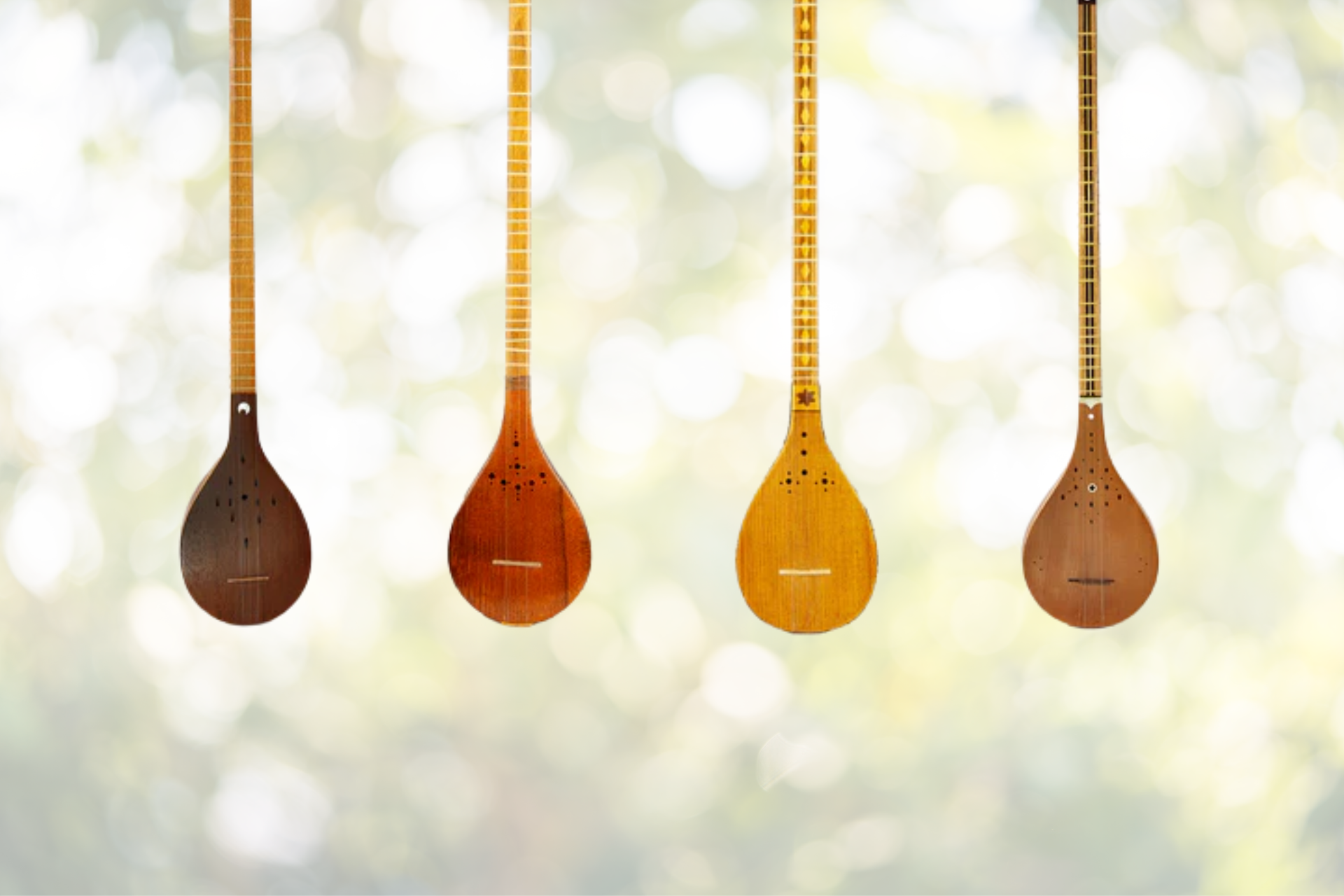General Articles
The Art of Improvisation: How the Setar Shapes Persian Radif Music
The setar, a delicate and expressive stringed instrument, holds a special place in the world of Persian classical music. Known for its rich tonal quality and intricate sound, the setar is a key instrument in interpreting and performing the radif, the foundational repertoire of Persian music. The art of improvisation, or "bedâheh-navâzi," is central to Persian musical tradition, allowing musicians to explore the emotional depths of the radif while adding their unique expression. Understanding how the setar shapes Persian radif music offers insight into both the instrument's capabilities and the cultural heritage it represents.
The Setar: A Brief Overview
The setar is a member of the lute family, characterized by its long neck and four metal strings, despite its name meaning "three strings" in Persian. Traditionally crafted from mulberry wood with a thin resonating body, the setar produces a soft, intimate sound, making it ideal for solo performances and small gatherings. Its frets are movable, allowing for the microtonal adjustments necessary in Persian music. The instrument is played with the index finger of the right hand, using a technique that produces a wide range of dynamics and timbres, essential for expressive improvisation.
Understanding Persian Radif Music
Radif is a collection of old melodic figures that have been passed down through generations, serving as the backbone of Persian classical music. It consists of several "dastgahs," or modal systems, each containing "gushehs," which are short melodic pieces that convey distinct moods and emotions. The radif is not just a repertoire but a framework that guides musicians in both composition and improvisation. Learning the radif requires years of dedicated practice, as it demands mastery of complex rhythms, melodic ornamentation, and the ability to convey subtle emotional nuances.
The Role of Improvisation in Persian Music
Improvisation in Persian music is not random or entirely freeform; it is a disciplined art rooted in the radif. Musicians internalize the radif to such an extent that they can spontaneously create new music within its structure. This improvisation reflects the performer’s emotions, technical skills, and understanding of Persian musical aesthetics. It allows for personal expression while maintaining a connection to the traditional repertoire. The improviser must balance creativity with respect for the radif’s established forms, creating a dynamic interplay between tradition and innovation.
How the Setar Facilitates Improvisation
The setar's design and playing technique make it uniquely suited for improvisation in Persian radif music. Its lightweight structure and responsive strings allow for subtle variations in tone and dynamics. The movable frets enable microtonal shifts essential for Persian modes, giving the musician the flexibility to explore different emotional expressions. The right-hand technique, involving delicate finger strokes, allows for intricate rhythmic patterns and expressive phrasing. These features make the setar an ideal instrument for conveying the nuanced emotions that improvisation in Persian music demands.
Techniques of Setar Improvisation
Setar improvisation involves several key techniques that enhance the expressive quality of the performance. Tahrir, a vocal-like ornamentation, mimics the human voice and adds emotional depth. Rez, or tremolo picking, creates a shimmering effect that adds intensity to the music. Dorrab and mordad, rapid note repetitions and quick trills, provide rhythmic and melodic embellishments. Musicians also use dynamic control, varying from soft, whisper-like tones to more forceful, resonant sounds. Mastery of these techniques allows the setar player to convey a wide range of emotions, from introspective melancholy to exuberant joy.
The Emotional Power of Setar Improvisation
The setar's ability to convey deep emotional states is one of its most celebrated qualities. In Persian culture, music is often seen as a spiritual practice, and the setar's intimate sound fosters a meditative atmosphere. Improvisation allows the musician to connect with the audience on a profound emotional level, transforming each performance into a unique, unrepeatable experience. The setar’s subtle dynamics and expressive capabilities make it a powerful medium for storytelling through music, where each phrase and ornamentation carries emotional weight.
The Influence of Masters on Setar Improvisation
Many renowned setar players have left a lasting impact on the art of improvisation in Persian radif music. Masters like Ahmad Ebadi, Mohammad Reza Lotfi, and Hossein Alizadeh have expanded the expressive range of the setar, introducing innovative techniques while staying rooted in traditional forms. Their contributions have inspired generations of musicians, demonstrating how improvisation can evolve within the framework of the radif. Listening to their recordings offers valuable insights into the interpretative possibilities of the setar and the depth of Persian musical tradition.
The Setar in Contemporary Persian Music
While deeply rooted in tradition, the setar continues to evolve in contemporary Persian music. Modern musicians incorporate elements from other musical genres, blending traditional radif with new harmonic and rhythmic ideas. This fusion has introduced the setar to global audiences, highlighting its versatility and timeless appeal. Contemporary setar players experiment with different tunings, extended techniques, and electronic effects, expanding the instrument's sonic palette while honoring its cultural heritage. This dynamic evolution keeps the art of setar improvisation vibrant and relevant in the modern musical landscape.
Final Words
The setar is more than just an instrument; it is a vessel for the rich emotional and cultural heritage of Persian classical music. Its role in shaping Persian radif music through improvisation is profound, offering musicians a means to explore personal expression within a traditional framework. The delicate sound, intricate techniques, and deep emotional resonance of the setar make it an enduring symbol of Persian musical artistry.
If you're inspired to explore the world of Persian music, visit Rhythm Music Shop, serving Markham, Richmond Hill, North York, Scarborough, and the rest of the GTA. Discover a wide range of traditional instruments, expert guidance, and everything you need to start your musical journey.

